INSIDE ISSUE 19.20 | May 15, 2020
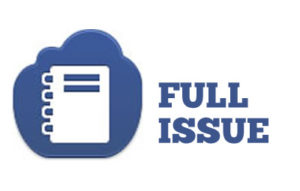 BIG STORY: Digital divide among chief concerns before fall semester
BIG STORY: Digital divide among chief concerns before fall semester
NEWS BRIEFS: No-excuse absentee voting in place for June primaries
COMMENTARY, Brack: Crisis yields some good news for planet, neighbors
SPOTLIGHT: S.C. Farm Bureau
MY TURN, Saul: Anti-racism should be our goa
FEEDBACK: Internet modernization needed for better absentee voting
MYSTERY PHOTO: Kind of spooky
S.C. ENCYCLOPEDIA: William Washington
Digital divide among chief concerns before fall semester
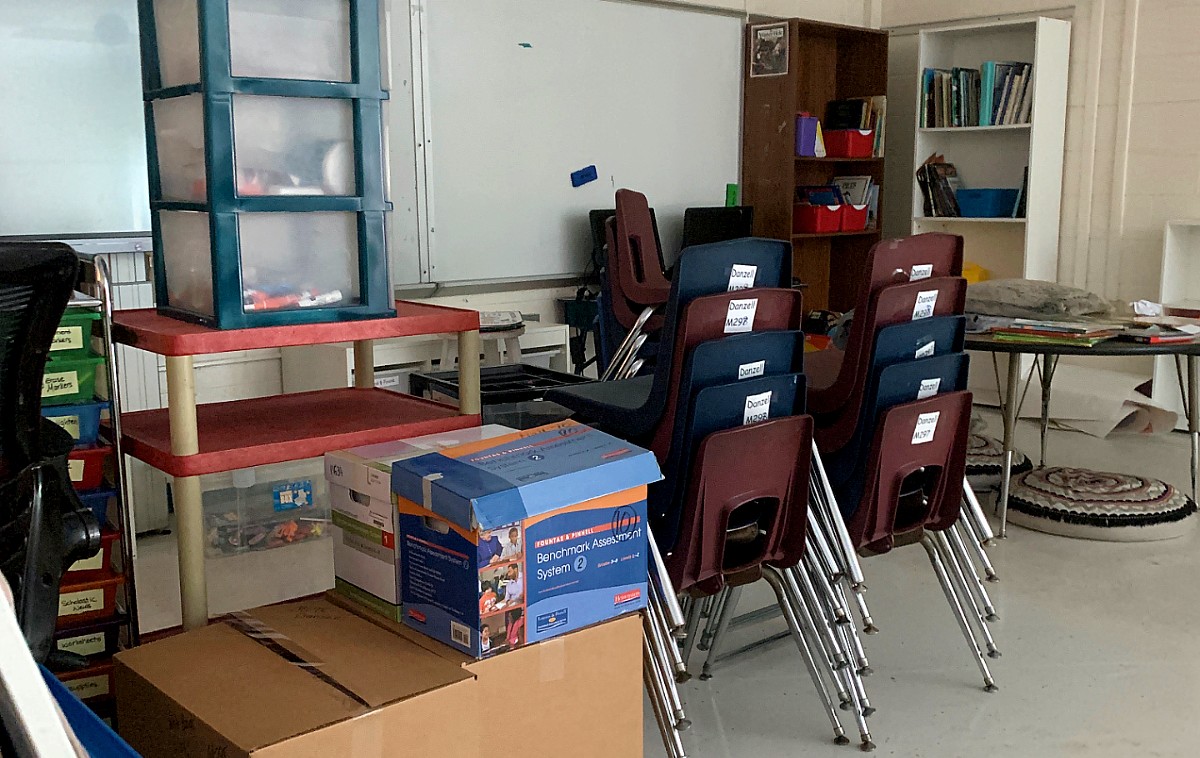
By Lindsay Street, Statehouse correspondent, May 14, 2020 | South Carolina’s crash course in virtual learning for K-12 students has left some of them further behind academically, according to state Superintendent of Education Molly Spearman.
By next month, the S.C. Department of Education will develop recommendations for the state’s 79 school districts on how to reopen schools safely as national experts say the virus will likely disrupt how people work and how students are educated through 2020 and into 2021.
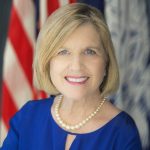
“We’re looking at safety with protocols in place, how it’s all going to work,” Spearman told Statehouse Report this week. She added she is working with the governor’s taskforce, AccelerateSC, and with stakeholders to develop ideas. “It’s not going to ever be back to normal but for us to operate as close to normal as possible.”
Spearman said the digital divide — the ability for a household to access the technology and internet needed for education — is one of the biggest obstacles leading up to the fall semester. But whether a family has the technology isn’t the only obstacle, she said. Teachers and students will also have to interact differently, and there may be additional precautions taken to keep teachers, staff, students and families safe. Spearman said she is also working with the governor’s task force to reimburse districts on the purchase of cloth, reusable masks for the school year.
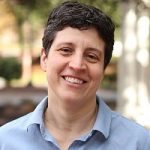
Teachers remain wary of returning to the classroom, however, according to SCforEd board member Dottie Adams of Columbia.
“We understand that education is the linchpin of people being able to fully return to work,” Adams said, adding that it needs to be done safely. “We’d love to go back but we need to have a lot of things in place.”
Summer school
Since public schools were closed March 15 as a precaution against coronavirus, students have lost 30 percent of in-person instruction time for the 2019-2020 school year.
The S.C. Department of Education is already planning to expand its summer reading program to include more grades and mathematics instruction, Spearman said. Up to 49,000 students will be able to qualify for the four-week program that, she said, could help students who have been left behind in the last 40-to-50 days of at-home instruction.
Spearman is also seeking six additional instruction days for struggling students at the start of the 2020-2021 school year. It will help teachers and staff assess educational and emotional levels of students after the long break, she said.
The summer can also provide a time to close the digital divide with internet and technology access, Spearman said. Seventeen school districts and 8 percent of students have had to go to paper-packet education, which requires students to handle two weeks of material at one time. The state’s 62 other school districts have either adapted fully online or have offered a hybrid. About one in three public school students was able to take a device home, according to the agency.
Challenges ahead

Shelli Quenga of the Palmetto Project questioned how many families in South Carolina have access not only to one computer, but enough computers and enough internet bandwidth for everyone in the family to work and obtain a quality education.
“Most low-income families use their phones for internet access,” Quenga said. And those phones may be free and with limited minutes.
Nearly two-thirds of public school students in the state are considered in poverty. The U.S. Census Bureau estimated in 2019 that 290,601 South Carolina households are without internet access.
“It really should highlight for elected officials just huge gaps in what, really now, are basic services,” Quenga said.
The U.S. Department of Agriculture’s Rural Development office in South Carolina has worked on bringing broadband to rural South Carolina since 2002.
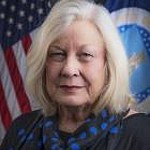
“It’s been a slow trickling,” state Director Debbie Turbeville said. “We’re making some progress. There’s a lot more progress to make, but I would hope in the next two years we would really make a dent in high-speed internet in South Carolina.”
In the last year, there have been two rounds of federal funding in the state to expand broadband in rural areas. A third round is expected later this year, Turbeville said.
Spearman said school districts can receive funding through the CARES Act via the U.S. Department of Education to buy technology, upgrade devices and provide training for teachers.
According to Spearman, the state needs about 160,000 devices so that every student has a tablet or laptop, which would cost around $64 million. The S.C. Department of Education also has a list of free Wi-Fi spots and internet services on its website.
In an April presentation, the agency called for “financial support and logistics cooperation” to help accomplish expanded internet access and resources.
A new way to learn, to teach
When schools were shuttered, only 15 of the state’s school districts already participated in online education for a day or two of inclement weather. But, Spearman said, no one was prepared to educate online for weeks at a time.
The April 1 survey of 3,818 teachers found 39 percent had concerns about student learning, resources for distance learning, professional development and teacher requirements. About 18 percent of teachers reported they lack sufficient resources or any resources to lead remote learning.
Adams said while some students don’t have internet access, the same is true of some teachers.
“If you’re a teacher and you don’t have Wi-Fi at your house that’s its own hurdle,” she said.
Spearman said even students with internet access can struggle as parents feel they are unable to teach their children due to their own education levels or work obligations.
“That’s really been a challenge,” she said, adding that her advice is: “Do the best you can and we will be there to support you.”
Spearman said more professional development will be available to teachers over the summer, and that some of the training could come from virtual charter schools.

April Pelt, digital learning specialist at Clemson University, teaches K-12 teachers how to design online courses. Clemson University is launching an online-teaching certificate for teachers this summer that has been in the works for years.
Pelt said the current Band-Aid approach is “not going to serve the students well.”
Teachers have mostly learned how to teach based on a “face to face model,” Pelt said, adding that they often rely on visual cues to gauge students’ absorption of content. Pelt also said teachers not used to teaching online can sometimes overwhelm students by putting out too much content in an effort to keep students on track in a “fire hose” approach.
Pelt said teachers and students need to move away from the “mama bird” approach of education, where students receive content passively, and students need to become more actively engaged when content moves online.
Adams said under the current model of public education students are “spoon fed education” in preparation for tests, and students are sometimes passed onto the next grade without a real understanding of material.
Spearman said one of the silver linings to the current educational experiment has been the lack of testing.
“It’s causing us to focus even more on the foundational standards students need to know. It’s been good for us to take a break from so much testing and we can evaluate how that’s worked,” she said.
- Have a comment? Send to: feedback@statehousereport.com
No-excuse absentee voting in place for June primaries
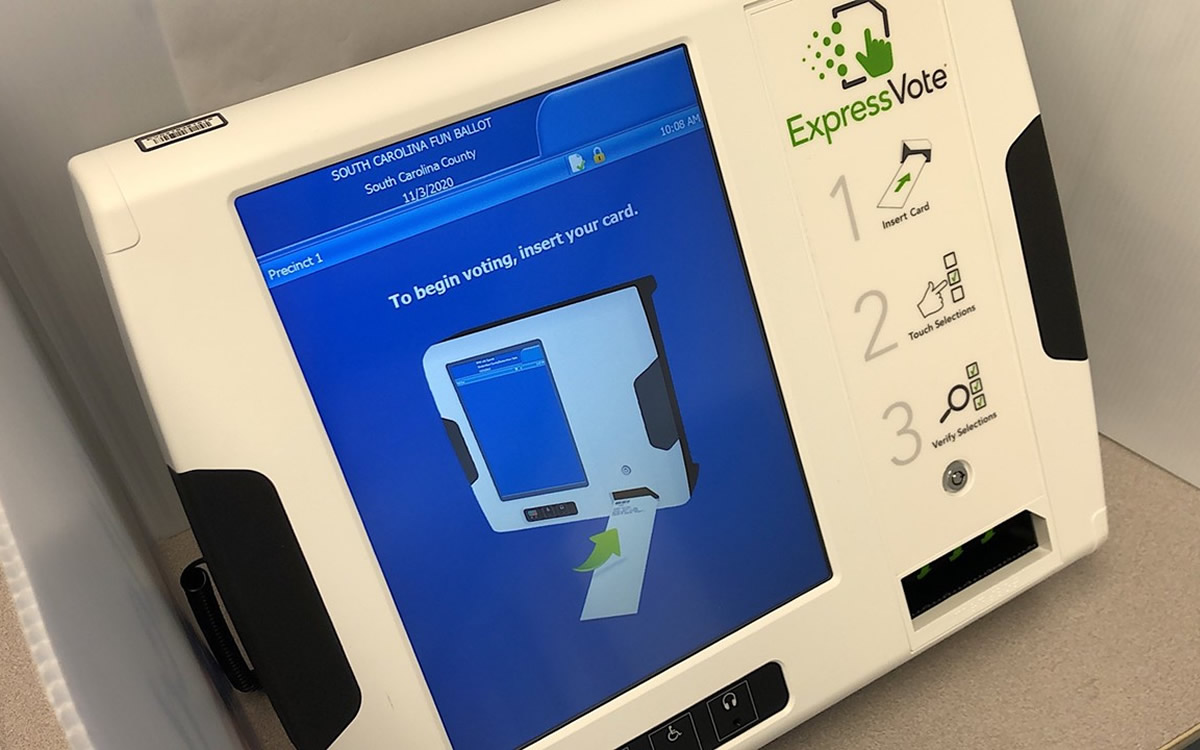
Staff reports | All South Carolina residents registered to vote in the June 9 primary can request an absentee ballot from the State Election Commission without specifying an excuse due to the ongoing state of emergency brought on by the coronavirus pandemic.
State lawmakers fast-tracked the legislation this week, passing the bill on Tuesday and earning the governor’s signature soon after.
The measure temporarily suspends the requirement to comply with one of a series of state-allowed excuses to request an absentee ballot. Sickness or a pandemic had not been among the allowed excuses. Still, the new short-term law, which expires July 1, requires a witness to sign the ballot in an effort to curb fraud.
The South Carolina Democratic Party and the American Civil Liberties Union filed lawsuits in April to force the state to expand ballot access for the 2020 elections. The exception for the June primaries does not extend to other special and rescheduled elections or the November general election.
In other news:
![]() Get your roots done. Starting next week, you’ll finally be able to do three things you haven’t done in a few weeks: A sweet cannonball at the local pool, get your brows done, and lift heavy things at the gym.
Get your roots done. Starting next week, you’ll finally be able to do three things you haven’t done in a few weeks: A sweet cannonball at the local pool, get your brows done, and lift heavy things at the gym.
Gov. Henry McMaster announced Thursday that on Monday, several close-contact facilities closed by executive order to stop the spread of COVID-19 will be allowed to reopen with guidance on how to best operate.
“With our increased capacity for testing the people of our state, it is time to responsibly and gradually get these small businesses back up and running,” McMaster said in a press release Monday.
The state rolled out expanded testing availability at mobile clinics throughout the state starting last week. Still, South Carolina remains one of the lowest-ranked states in terms of tests per capita, according to Buzzfeed News (via data from The Atlantic’s COVID Tracking Project).
Curbing vigilante justice. Charleston-area lawmakers on Tuesday introduced two bills intended to stop citizen’s arrests in South Carolina. Both bills, which face a slim chance of passage because of an abbreviated legislative year, were proposed in reaction to Ahmaud Arbery’s shooting death near Brunswick, Ga.
Arbery, a 25-year-old black man, was killed in February while out for a jog a few miles from home. Officials initially declined to prosecute two men involved in the altercation that led to Arbery’s death, citing Georgia’s citizen’s arrest laws. The men, a father and son, have since been charged with murder.
“This type of arrest could have effectively been made here,” said North Charleston Democratic Rep. Marvin Pendarvis, a sponsor of both bills (H.5492 and H.5487).
According to South Carolina Code of Laws, any person may arrest another individual if they witness a felony or larceny or have “certain information” that a felony has been committed. Such broad statutes could lead to fatal incidents similar to Arbery’s in South Carolina, Pendarvis said. s. “Law enforcement should be the only one that should be able to make any kind of arrest,” Pendarvis told the City Paper. “If you’re a citizen that wants to do that, then you need to go to the [police] academy. They could use it. There’s a shortage of police officers, so go ahead and get the training, get the certification to do that. What we don’t need is vigilante justice.” More.
Jobless claims recede; emergency extended. While about 500,000 South Carolinians have filed unemployment claims in recent weeks, they’ve been receding, falling for the fourth straight week, as the economy in the state starts to reopen. Meanwhile, some South Carolinians are waiting for unemployment benefits while housing advocates are hoping the state can dodge a wave of evictions. A state of emergency has been extended to aid in testing. But the S.C. Senate on Tuesday rebuked Gov. Henry McMaster for not getting permission from lawmakers to continue the state of emergency, according to this story.
No shackling. Lawmakers sent a bill to Gov. Henry McMaster’s desk Tuesday that would ban the shackling of pregnant or postpartum inmates at prisons and jails, The State reported.
Staff contributors included Charleston City Paper reporters Skyler Baldwin and Heath Ellison, City Paper editor Sam Spence and Statehouse Report editor Andy Brack.
- Have a comment? Send to: feedback@statehousereport.com
Friends and readers,
 We’re proud to offer Statehouse Report for free. For more than a dozen years, we’ve been the go-to place for insightful independent policy and political news and views in the Palmetto State. And we love it as much as you do.
We’re proud to offer Statehouse Report for free. For more than a dozen years, we’ve been the go-to place for insightful independent policy and political news and views in the Palmetto State. And we love it as much as you do.
But now, we can use your help. If you’ve been thinking of contributing to Statehouse Report over the years, now would be a great time to contribute as we deal with the crisis. In advance, thank you.
— Andy Brack, editor and publisher
BRACK: Crisis yields some good news for planet, neighbors
By Andy Brack, editor and publisher | Buried beneath the headlines of coronavirus doom and gloom, you can still find a little good news.
 Case in point: Renewable energy produced in the U.S. this year may yield more electricity than power that comes from coal-fired plants for the first time ever. Why? Because more people are at home and businesses have been empty, drained by people hunkering down in the pandemic.
Case in point: Renewable energy produced in the U.S. this year may yield more electricity than power that comes from coal-fired plants for the first time ever. Why? Because more people are at home and businesses have been empty, drained by people hunkering down in the pandemic.
“In just the first four and a half months of this year, America’s fleet of wind turbines, solar panels and hydroelectric dams have produced more electricity than coal on 90 separate days — shattering last year’s record of 38 days for the entire year,” according to The New York Times on May 14.
Wow. That’s a big deal. But it’s been coming for awhile, said Eddy Moore, who directs the energy and climate program at the S.C. Coastal Conservation League.
“This transformation has been happening for a decade or more,” he said. “Renewable energy has now become cheaper than fossil fuel and the challenges of variability are being solved on a large scale.”
A May 11 report from the U.S. Energy Information Administration shows coal-fired electricity generation dropped 16 percent to the lowest level since 1976 as power generation from natural gas-fired plants and wind turbines reached new records.
“We are past the tipping point and the change is accelerating. In South Carolina, this means there is a real chance to dramatically reduce carbon pollution and the unhealthy smog that goes along with it without increased cost—even with reduced cost. The environment, health and the economy all can get better. The smart money will ride this wave, not fight it.”
But the news gets even better in the Palmetto State because the General Assembly this week approved, as part of a budget deal, the closure of another coal-fired power plant at Santee Cooper. And as a bonus, lawmakers included language to allow a solar energy expansion to supply more than 50,000 customers, Moore said.
“This was done as a cost-saving measure because the old coal plants are inefficient,” he said. “This will continue our trend towards cleaner air, even after the economy ramps back up. Over the next year, we hope to see similar cost-saving coal retirement plans at other South Carolina utilities, which will make our air healthier to breathe.”
The pandemic has frustrated students and parents, who discovered they’d actually prefer to be in school or at work rather than be stuck in the house. But global shutdowns have also given a breather to the earth. Satellite imagery shows polluted air has been swept away as fewer cars jam roads. Coastal towns, like Venice, have seen waters become clearer and aquatic life return because massive cruise liners aren’t churning the sea bed.
The resilience of the planet is also found socially, despite some who protest shutdowns like armed political robots. Most people just seem to endure with more kindness. Folks are friendlier when they walk their dogs. Seamstresses pulled out sewing machines to make cloth masks, while students and volunteers produced high-tech equivalents on 3-D printers. Neighbors collect money to buy pizzas and protective gear for first responders.
It’s not necessarily a gentler world. By next week, coronavirus will be responsible for the deaths of more Americans than the 94,000 who died in the Korean and Vietnam wars.
But at home, it’s kinder. Just read the heartening story of how a group of Greenwood musicians, unable to perform in the many venues around town, decided to share their talents by performing a classic, Don McLean’s “American Pie” and splitting donations.
As reported in the Greenwood Index-Journal by executive editor Richard Whiting, McLean gave his blessing for the singers and musicians to make a new recording of his classic: “I can’t imagine what it’s like for struggling, young musicians who play restaurants and bars now and then. … So I was happy to do it.”
We’re glad he did. Give the new version a listen. It’ll bring you a smile — and maybe a tear or two.
- Have a comment? Send to: feedback@statehousereport.com.
S.C. Farm Bureau
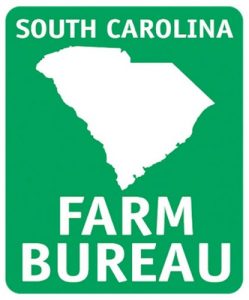 Statehouse Report is provided for free to thousands of subscribers thanks to the generosity of our underwriters. Today we shine a spotlight on our newest underwriter, S.C. Farm Bureau. It is a grassroots, non-profit organization that celebrates and supports family farmers, locally-grown food and rural lands through legislative advocacy, education and community outreach.
Statehouse Report is provided for free to thousands of subscribers thanks to the generosity of our underwriters. Today we shine a spotlight on our newest underwriter, S.C. Farm Bureau. It is a grassroots, non-profit organization that celebrates and supports family farmers, locally-grown food and rural lands through legislative advocacy, education and community outreach.
S.C. Farm Bureau’s alliance of nearly 100,000 members includes everyone from foodies and fishermen to lawyers, restaurateurs, entrepreneurs, community leaders, and of course, farmers. By connecting farmers to the larger community, the organization cultivates understanding about agriculture’s importance to our local economies. The S.C. Farm Bureau explains its mission: “We deepen our collective knowledge of who, where and how food grows. We empower people to make informed choices. We grow mutually-beneficial relationships. And, we ensure the future of the family farms, locally-grown food and the rural South Carolina lands we love.”
- To learn more about S.C. Farm Bureau’s programs, click here.
- To view media and publications, click here
- For policy and legislation, click here.
Saul: Anti-racism should be our goal

By Dr. Robert Saul, special to Statehouse Report | Racism is a problem for all, but particularly children. Those affected are raised in an environment that has lifetime effects and usually multiple effects across generations. The easy thing to do is to sit back and just hope that society does better. But those who care for children are not allowed that “luxury.” They must engage to make a difference.
 The American Academy of Pediatrics recently released a policy statement on racism. As the professional organization representing close to 70,000 pediatric providers, it is compelled to address factors that leave some children more vulnerable than others. The statement identifies racism as a “system of structuring opportunity and assigning value based on the social interpretation of how one looks (‘race’) that unfairly disadvantages some individuals and communities, unfairly advantages other individuals and communities and saps the strength of the whole society through the waste of human resources.” Now that is a mouthful, but note the three main points: 1) disadvantage to those targeted; 2) advantage to those not targeted; and 3) potential social discord and decreased productivity. The failure to address racism affects the health and well-being of all children, their families and their communities.
The American Academy of Pediatrics recently released a policy statement on racism. As the professional organization representing close to 70,000 pediatric providers, it is compelled to address factors that leave some children more vulnerable than others. The statement identifies racism as a “system of structuring opportunity and assigning value based on the social interpretation of how one looks (‘race’) that unfairly disadvantages some individuals and communities, unfairly advantages other individuals and communities and saps the strength of the whole society through the waste of human resources.” Now that is a mouthful, but note the three main points: 1) disadvantage to those targeted; 2) advantage to those not targeted; and 3) potential social discord and decreased productivity. The failure to address racism affects the health and well-being of all children, their families and their communities.
The statement goes on to detail the impact of racism—health inequities, chronic stress, poverty and the unequal application of justice. With regard to the latter, those who are familiar with the work of Bryan Stevenson of the Equal Justice Initiative are reminded that the “opposite of poverty is not wealth; the opposite of poverty is justice.” But all of the specific factors require significant engagement if we want to make a change.
The childhood experiences of racism are recognized to occur at three levels—1) institutional; 2) personal; and 3) internalized. Institutional (or structural) racism refers to the social structures that continue the disadvantages for some and the advantages for others and perpetuate the system that allows it. These social structures can include neighborhoods, educational sites, pockets of poverty and legal means. When these institutional factors occur, they are real barriers. And when these barriers are present, these experiences become very personal. And then more often than not, these personal experiences become internalized by the folks living under specter of racism.
The skeptical reader will say that this vicious cycle no longer exists in our society, that all of the past social ills have been corrected. The skeptical reader would be wrong. As a pediatrician for now over 40 years, I can accurately attest to the continued problems with racism that need our constant attention. A path forward for health professionals and community activists and policy makers is well articulated in the AAP’s policy statement.
Yet each of us has a role beyond reading and trying to implement an important policy statement. The new book by Ibram Kendi, history professor at American University, tells us that it is not sufficient to say “I am not a racist.” Such a passive stance goes against our moral and religious teaching. We have to be active in our stance against racism and bigotry and institutional barriers that perpetuate keeping one group of citizens at a continued disadvantage. We have to be anti-racist—that is, we have to be “one who is supporting an anti-racist policy through their actions and expressing anti-racist ideas.” It is insufficient to say that “I don’t have a racist bone in my body” or “some of my best friends are people of color.” We have to be on the front lines opposing racism at every turn.
I am proud of my professional organization for taking a strong stand against racism and outlining some significant actions to make a difference. I challenge the rest of us to do the same. It is not easy, and at times it seems to go against what might be ingrained into our culture. Change is always hard, but our humanity demands our willingness to be engaged in this work of reducing racial inequities.
Dr. Robert A. Saul is a Greenville pediatrician and the author of “My Children’s Children: Raising Young Citizens in the Age of Columbine” and “All About Children.” In 2015, he offered this commentary on the toxic effect of poverty.
Internet modernization needed for better absentee voting
To the editor:
![]() Your advice [on absentee voting] is insufficient unless a corresponding attitude towards internet modernization is also adopted. I am somewhat aghast at how clunky the process to absentee vote is. Requiring three to five snail-mail steps in today’s day and age? Really.
Your advice [on absentee voting] is insufficient unless a corresponding attitude towards internet modernization is also adopted. I am somewhat aghast at how clunky the process to absentee vote is. Requiring three to five snail-mail steps in today’s day and age? Really.
Your IRS commentary is also well taken: if they can allow full remote access to file against our complex tax code, being able to place check marks against a small list and properly count tallies is, by comparison, a cake walk. But in a sense, it is unfair to compare to processing tax returns. That is, because taxes are so complicated these days, there is a cottage industry surrounding tax preparation and submission. But no such economic driving force exists with voting. Just government, and a small number of voting hardware suppliers. Not encouraging for change happening.
So we will see if this crisis is too good to pass up… especially since it is the citizenry that benefits, not the special interests or political parties. As I near age 75, I suspect I will not be among the living to reap any benefits of possible change.
— Ed Lengyel, Oconee County.
Expect long lines at polls as workers balk
Enough poll workers from Feb. 29 have said no for June to warn of longer lines this time.
“Between a quarter and a third” is what I heard two weeks ago from two of those who won’t do it this time around.
— Mimi Dias, Charleston, S.C.
What do you think?
We love hearing from our readers and encourage you to share your opinions. But you’ve got to provide us with contact information so we can verify your letters. Letters to the editor are published weekly. We reserve the right to edit for length and clarity. Comments are limited to 250 words or less. Please include your name and contact information.
-
- Send your letters or comments to: feedback@statehousereport.com
Kind of spooky
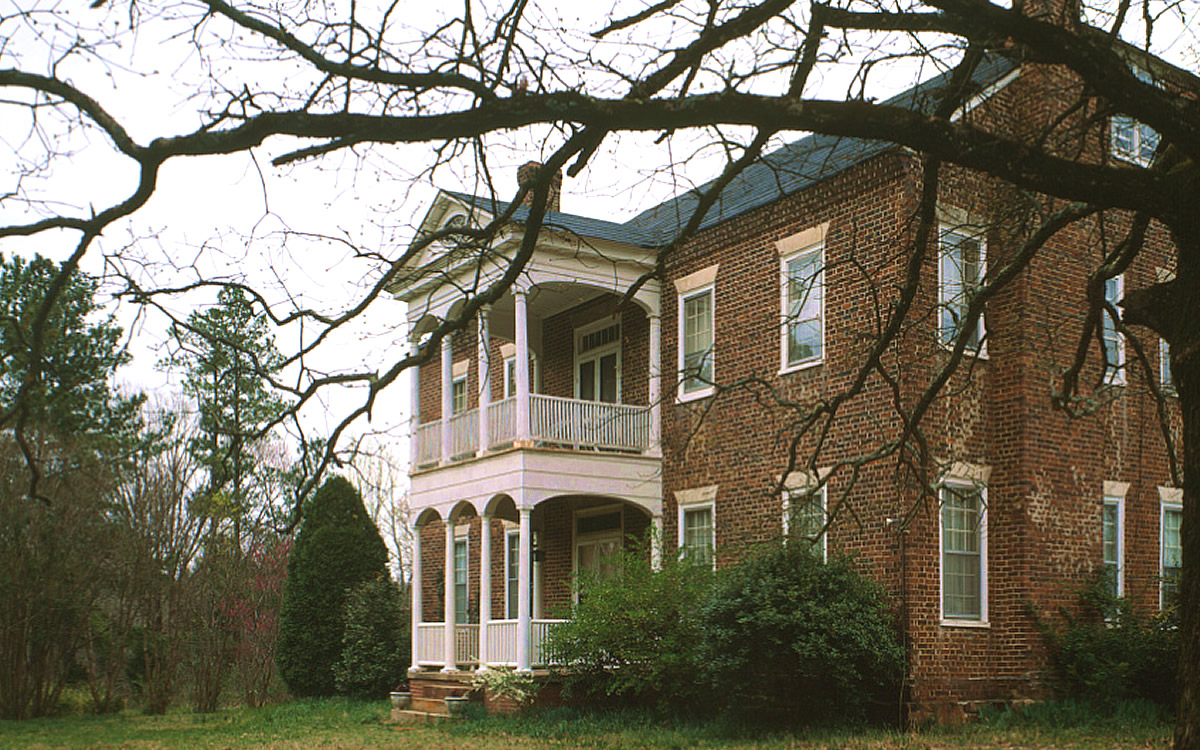
Here’s a spooky-looking mansion that’s somewhere in South Carolina. Send your best guess of what it is to feedback@statehousereport.com. And don’t forget to include your name and the town in which you live.
Our previous Mystery Photo
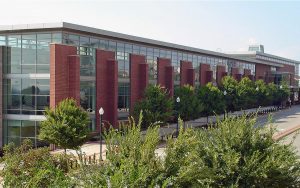 Our May 8 image, “Lots of glass,” might have been too easy since almost 20 alert readers responded. (But maybe it’s good to have an easy one, every now and then. This week’s might prove to be tough.)
Our May 8 image, “Lots of glass,” might have been too easy since almost 20 alert readers responded. (But maybe it’s good to have an easy one, every now and then. This week’s might prove to be tough.)
The photo shows the Columbia Metropolitan Convention Center. Congratulations to everyone who identified it, including Jane Hart Lewis and Barry Wingard, both of Florence, Mary Louise Resch of West Columbia; George Graf of Palmyra, Va.; Taft Matney of Mauldin; Karen Owens, Donna McGreevy and Elizabeth Jones, all of Columbia; Wayne Beam of North Myrtle Beach; Philip Cromer of Beaufort; Will Bradley of Las Vegas, Nevada; Frank Bouknight of Summerville; Faith Line of Anderson; Russ Griffith of McCormick; David Lupo of Mount Pleasant; Debra Adams of Chesterfield; Elaine Huff-Lowe of Inman; Henry Eldridge of Tega Cay; and Kevin Mertens of Greenville.
Graf told us this about the center:”When the Columbia Metropolitan Convention Center was built nearly two decades ago, it was deliberately designed small to make its cost more amenable to the city of Columbia, Richland and Lexington counties, and Richland District One which funded it. In fact, the two back walls are purposely non-load-bearing so the exhibit hall could be expanded over the back parking lot.
“Today, it is by far the smallest among the city’s competitors for conventions in the Southeast, with 23,700 square feet of exhibit space and 33,400 square feet of ballroom/meeting space. By contrast, the Charleston Area Convention Center has 77,000 square feet of exhibit space and 73,000 square feet of meeting space, while Greenville’s suburban TD Convention Center has a whopping 280,000 square feet of exhibit space and 90,000 square feet of meeting space. Despite its size, however, the convention center has been successful, increasing the number of visitors almost every year.”
Send us a mystery: If you have a photo that you believe will stump readers, send it along (but make sure to tell us what it is because it may stump us too!) Send to: feedback@statehousereport.com and mark it as a photo submission. Thanks.
William Washington
Revolutionary War soldier William Washington was born on February 28, 1752, in Overwharton Parish, Stafford County, Virginia, the son of Bailey Washington and Catherine Storke, and he was a second cousin of President George Washington. Having no middle name, he is often confused in history with his distant cousin William Augustine Washington (1757–1810). At the outbreak of the Revolutionary War, in 1775 he was elected a captain of Stafford County Minutemen, which was integrated into the Third Virginia Regiment in 1776. After marching north with his unit later in the year, Captain Washington led a successful charge against a Hessian artillery battery at the Battle of Trenton on December 26, 1776. Wounded in this action, he was rewarded with a promotion to major of the Fourth Regiment of Continental Light Dragoons.
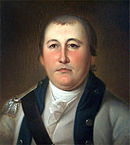
By the end of 1779 Washington had advanced to the rank of lieutenant colonel, commanding the Third Regiment of Continental Light Dragoons, and was ordered to join the patriot forces of General Benjamin Lincoln in Charleston, South Carolina. By March 1780 Washington’s regiment was detached with the light forces near Moncks Corner to reconnoiter and screen against the advancing enemy. On March 26, 1780, he had his first encounter with British Lieutenant Colonel Banastre Tarleton near Rantowle’s Bridge. Washington’s command was soundly defeated by Tarleton at Moncks Corner on April 14 and again at Lenud’s Ferry on May 5.
After refitting in North Carolina, Washington captured Rugeley’s Fort near Camden and then defeated a marauding band of Tories at Hammond’s Old Store in the Little River District later in the year. On January 17, 1781, Washington commanded a combined cavalry force at the Battle of Cowpens that was instrumental in the victory there. For his intrepidity in this engagement, Congress awarded him a silver medal. Always at the head of his regiment, Washington fought valiantly at Guilford Courthouse, North Carolina, in March and, on returning to South Carolina, at Hobkirk Hill in April. At the Battle of Eutaw Springs on September 8, 1781, he was seriously wounded while leading a charge and was subsequently captured by the enemy. The British commander in the South, Lord Cornwallis, would later comment that “there could be no more formidable antagonist in a charge, at the head of his cavalry, than Colonel William Washington.”
As a prisoner of war, Washington spent the remaining war years in Charleston. There he married Jane Reily Elliott on April 21, 1782, and consequently gained Sandy Hill plantation and other properties in St. Paul’s Parish. The marriage produced two children. Pursuing the life of a successful lowcountry planter, Washington represented the parish in the General Assembly from 1787 to 1804. He also accepted a post as brigadier general commanding the Seventh Brigade of state militia in 1794. During the anticipated hostilities with France in 1798, he was appointed a brigadier general in the U.S. Army commanding South Carolina and Georgia, serving until 1800. After a lingering illness, Washington died on March 16, 1810.
— Excerpted from an entry by Samuel K. Fore. This entry may not have been updated since 2006. To read more about this or 2,000 other entries about South Carolina, check out The South Carolina Encyclopedia, published in 2006 by USC Press. (Information used by permission.)
ABOUT STATEHOUSE REPORT
Statehouse Report, founded in 2001 as a weekly legislative forecast that informs readers about what is going to happen in South Carolina politics and policy, is provided to you at no charge every Friday.
Meet our team
- Editor and publisher: Andy Brack, 843.670.3996
- Statehouse correspondent: Lindsay Street
Buy the book
Now you can get a copy of editor and publisher Andy Brack’s We Can Do Better, South Carolina! ($14.99) as a paperback or as a Kindle book ($7.99). . The book of essays offers incisive commentaries by editor and publisher Andy Brack on the American South, the common good, vexing problems for the Palmetto State and interesting South Carolina leaders.
More
- Mailing address: Send inquiries by mail to: 1316 Rutledge Ave., Charleston, SC 29403
- Subscriptions are free: Click to subscribe.
- We hope you’ll keep receiving the great news and information from Statehouse Report, but if you need to unsubscribe, go to the bottom of the weekly email issue and follow the instructions.
- © 2020, Statehouse Report, a publication of City Paper Publishing, LLC. All rights reserved.
- Read our sister publications: Charleston City Paper (every Wednesday) | Charleston Currents (every Monday)















 We Can Do Better, South Carolina!
We Can Do Better, South Carolina!